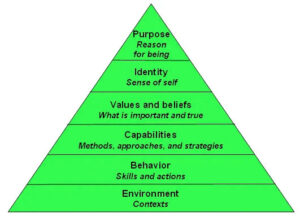Ho’oponopono is a traditional Hawaiian practice that focuses on reconciliation and forgiveness. But what role does self-identity play in this ancient healing method? Understanding the importance of self-identity in Ho’oponopono is key to unlocking its transformative power. By examining how our beliefs and perceptions shape our experiences, we can learn to take responsibility for our own healing and create positive change in our lives. In this article, we will explore the intricate relationship between self-identity and Ho’oponopono, uncovering the profound impact it can have on our well-being and inner peace.
Understanding Self-identity in Ho’oponopono
Defining Self-identity
Self-identity refers to the core essence of who you are as an individual. It encompasses your beliefs, values, perceptions, emotions, and experiences that shape your sense of self. In Ho’oponopono, a traditional Hawaiian practice of reconciliation and forgiveness, self-identity holds significant importance as it forms the foundation for healing and transformation.
Concept of Self-identity in Ho’oponopono
In Ho’oponopono, self-identity is viewed as a fundamental aspect of one’s existence and is deeply intertwined with the concept of ‘ponopono,’ loosely translated as “to make right.” The practice emphasizes the understanding that you are responsible for everything you experience in your life, and your self-identity plays a crucial role in this process.
Recognizing the Importance of Self-identity
Impact of Self-identity on Personal Growth
Your self-identity shapes the lens through which you perceive and interpret the world around you. It influences your thoughts, emotions, behaviors, and ultimately, the results you manifest in your life. When you have a clear and empowering self-identity, you are more likely to engage in personal growth, pursue your passions, and overcome challenges with resilience.
Self-identity as a Foundation in Ho’oponopono
Ho’oponopono recognizes the significance of self-identity as the cornerstone of healing and transformation. By acknowledging and aligning with your true self-identity, you establish a solid foundation to navigate the complexities of life. This process helps you connect with your authentic essence and take responsibility for your actions, thoughts, and emotions.

The Relationship Between Self-identity and Healing
Addressing Core Self-identity Issues in Ho’oponopono
Ho’oponopono encourages individuals to delve deep into their self-identity to address any core issues that may be hindering their healing journey. This practice emphasizes the importance of self-reflection and self-awareness to uncover limiting beliefs, traumas, and patterns that may be negatively impacting one’s well-being.
Uncovering Limiting Beliefs and Self-identity Patterns
By exploring your self-identity within the context of Ho’oponopono, you can identify and challenge limiting beliefs and self-identity patterns that no longer serve you. These patterns often stem from past experiences or external influences and can hinder personal growth and healing. Through self-inquiry and introspection, you can become aware of these patterns and work towards releasing them.
Reclaiming and Reconstructing Self-identity in Healing
Ho’oponopono offers the opportunity to reclaim and reconstruct your self-identity by releasing attachments to negative experiences or perceptions. Through forgiveness and self-reflection, you can begin to let go of the layers that no longer align with your true essence. This process allows for the emergence of a healed and empowered self-identity, fostering personal growth and transformation.
Healing Through Self-identity Alignment
Aligning Self-identity with Ho’oponopono Principles
To experience healing through Ho’oponopono, it is essential to align your self-identity with the core principles of the practice. These principles include taking complete responsibility for your experiences, acknowledging your interconnectedness with others, and embracing the concept of unity and oneness. By aligning your self-identity with these principles, you can pave the way for inner healing and harmony.
Cultivating Self-awareness and Self-acceptance
Self-awareness and self-acceptance are pivotal in the journey of healing through self-identity alignment. By cultivating a deep understanding of who you are at the core, including your strengths, weaknesses, and values, you can cultivate self-acceptance and embrace your authentic self. This self-awareness allows for a more profound connection with others and promotes healing in relationships.
Self-empowerment and Liberation through Self-identity
Aligning your self-identity with Ho’oponopono principles empowers you to take charge of your own healing and liberation. By recognizing that you have the power to heal and transform your reality, you can let go of victimhood and embrace your innate potential. This shift in self-identity fosters a sense of empowerment and opens up new opportunities for growth and self-expression.

Self-identity and Relationship Healing
Revisiting Self-identity in the Context of Relationships
Relationships can serve as mirrors that reflect aspects of your self-identity. Ho’oponopono encourages individuals to explore their self-identity within the context of relationships to address underlying wounds or patterns that may be affecting the dynamic. By examining how you show up in relationships and how your self-identity influences these interactions, you can promote healing and reconciliation.
Healing Relationship Wounds from a Self-identity Perspective
Ho’oponopono recognizes that healing relationship wounds starts with healing your own self-identity. By taking responsibility for your thoughts, emotions, and actions in relationships, you can address underlying wounds and patterns that contribute to conflict or dysfunction. This self-reflective process allows for forgiveness, compassion, and understanding to transform relationships.
Transforming Limiting Relationship Patterns through Self-identity Work
By engaging in self-identity work within the framework of Ho’oponopono, you can transform limiting relationship patterns that no longer serve your growth and well-being. This involves identifying and releasing the learned behaviors, beliefs, or expectations that perpetuate unhealthy dynamics. Through self-awareness and intentional healing practices, you can create new patterns that foster harmonious and fulfilling relationships.
Shifting Self-identity for Personal Transformation
Self-identity as a Catalyst for Personal Transformation
Recognizing the power of self-identity as a catalyst for personal transformation is a key tenet of Ho’oponopono. By shifting your self-identity from a limited, egoic perspective to a broader, transpersonal perspective, you can embrace your unlimited potential and create transformative changes in your life. This shift entails letting go of societal conditioning, external validation, and false beliefs to tap into your true essence.
Breaking Free from the Egoic Self-identity
The egoic self-identity often creates limitations and holds you back from experiencing personal transformation. Ho’oponopono encourages individuals to break free from the egoic self-identity by relinquishing attachments to labels, roles, and external expectations. By detaching yourself from the ego and connecting with your Higher Self, you can embark on a journey of self-discovery, growth, and liberation.
Cultivating Transpersonal Self-identity in Ho’oponopono
In Ho’oponopono, cultivating a transpersonal self-identity is a transformative process that involves transcending individual desires and aligning oneself with the greater good. By embracing interconnectedness, compassion, and love for all beings, you can cultivate a self-identity rooted in unity and oneness. This transpersonal shift in self-identity lays the groundwork for personal transformation and contributes to the collective healing of humanity.

Towards Self-identity Integration
Integrating Different Aspects of Self-identity
Self-identity integration involves recognizing and embracing the various aspects of yourself without judgment or resistance. Ho’oponopono promotes the integration of different aspects of self-identity, including the shadow self, inner child, and higher self. By acknowledging and integrating these aspects, you can restore wholeness, balance, and harmony within your self-identity.
Balancing Individual and Collective Self-identity
Ho’oponopono emphasizes the importance of balancing individual and collective self-identity. While it is essential to honor your unique essence and individuality, it is equally important to recognize your interconnectedness with others and the collective. Finding this balance allows for a deeper understanding of your role in the world and fosters empathy, cooperation, and unity.
Navigating Transitions and Evolving Self-identity
Self-identity is not fixed but continually evolves and transforms throughout life. Ho’oponopono provides tools and practices to navigate transitions and embrace the evolving nature of self-identity. By staying connected to your authentic essence, cultivating self-awareness, and embracing change, you can navigate transitions with grace and harness the transformative power of self-identity.
Self-identity and Forgiveness in Ho’oponopono
Understanding Forgiveness from a Self-identity Perspective
Forgiveness is a central aspect of Ho’oponopono and deeply intertwined with self-identity. From a self-identity perspective, forgiveness involves releasing attachments to past experiences, beliefs, and judgments that hinder your growth and well-being. By forgiving yourself and others, you can heal emotional wounds, create space for personal transformation, and align with your true self-identity.
Releasing Self-identity Attachments through Forgiveness
Ho’oponopono teaches that attachments to self-identity can limit your ability to forgive and let go. By recognizing the impermanence and fluidity of self-identity, you can release attachments to labels, roles, and past narratives that no longer serve your highest good. This process allows forgiveness to flow freely and facilitates healing and personal growth.
Forgiving and Healing the Self through Ho’oponopono
Ho’oponopono offers a powerful framework for forgiving and healing the self. By taking responsibility for your experiences, thoughts, and emotions, you can initiate the healing process within yourself. Through self-compassion, self-forgiveness, and self-love, you can release self-judgment, heal wounds, and align with your authentic self-identity, promoting overall well-being and personal fulfillment.

Self-identity Work as a Form of Self-care
Embracing Self-care through Self-identity Exploration
Self-identity work within Ho’oponopono encompasses a form of self-care. By prioritizing self-reflection, self-compassion, and self-discovery, you can nurture your well-being on a deep level. This self-care practice allows for healing, growth, and self-awareness, ultimately leading to a more fulfilling and purposeful life.
Self-compassion and Self-love in Ho’oponopono
Ho’oponopono emphasizes the importance of self-compassion and self-love in the journey of self-identity exploration and healing. By cultivating a compassionate and loving relationship with yourself, you can embrace your imperfections, honor your needs, and let go of self-limiting beliefs. This practice fosters self-acceptance, resilience, and a deeper connection with your authentic self-identity.
Honoring Authentic Self-identity through Self-care
Through self-identity work and self-care practices, you can honor and embrace your authentic self-identity. By establishing healthy boundaries, engaging in activities that nourish your soul, and prioritizing your well-being, you create an environment that supports the expression and fulfillment of your true essence. This self-care journey aligns with the teachings of Ho’oponopono, promoting healing, growth, and well-being.
Self-identity and Manifesting Desired Outcomes
Aligning Self-identity with Intention and Manifestation
Ho’oponopono recognizes the power of aligning your self-identity with intention and manifestation. By becoming aware of your desires and connecting with your authentic self-identity, you can align your thoughts, emotions, and actions with your intended outcomes. This alignment allows for the manifestation of positive experiences, abundance, and fulfillment in your life.
Harnessing the Power of Self-identity in Co-creating Reality
Your self-identity is intricately connected to your ability to co-create your reality. In Ho’oponopono, the practice of taking full responsibility for your experiences empowers you to harness the power of self-identity in shaping your reality. By acknowledging your role as a co-creator, you can consciously align your self-identity with your desired outcomes and actively participate in manifesting them.
Creating Positive Self-identity Affirmations for Manifestation
Ho’oponopono encourages the use of positive affirmations to reinforce a desired self-identity and manifest desired outcomes. By consciously choosing affirmations that align with your true essence and intended reality, you can shift your beliefs and mindset, creating a fertile ground for manifestation. These affirmations act as powerful tools in the journey of self-identity alignment and the manifestation of your desired outcomes.
In conclusion, self-identity plays a crucial role in Ho’oponopono as a foundation for healing, personal growth, and transformation. By recognizing and aligning with your authentic self, exploring limiting beliefs and patterns, and embracing forgiveness and self-care, you can navigate your self-identity journey and manifest positive outcomes in all areas of your life. Ho’oponopono offers a powerful path towards embracing your true essence and co-creating a reality aligned with your highest potential.

